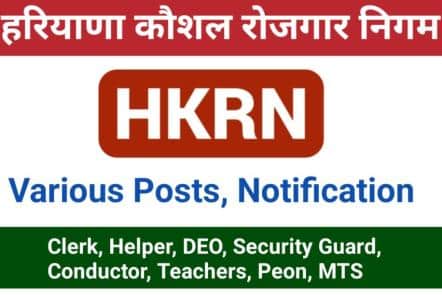In the rapidly evolving landscape of modern education and professional development, assessment tools are pivotal in gauging individual and organizational performance. Among these, the HKRN Score Card has emerged as a notable instrument. hkrnl This article delves into the intricacies of the HKRN Score Card, elucidating its components, significance, and practical applications.
What is the HKRN Score Card?
An evaluative tool, the HKRN (Holistic Knowledge and Resource Network) Score Card, measures various aspects of educational and professional competencies. It encompasses a broad range of criteria to provide a comprehensive assessment of performance. People widely recognize the HKRN Score Card for its holistic approach, which integrates both quantitative and qualitative metrics.
Components of the HKRN Score Card
The structure of the HKRN Score Card revolves around several key components, each of which contributes to a thorough and comprehensive assessment:
Knowledge Proficiency
This component evaluates the depth and breadth of an individual’s knowledge in specific subject areas. It includes assessments through tests, quizzes, and practical applications.Scores from standardized tests, practical exams, and peer reviews.
Skills Competence
Skills competence measures the practical application of knowledge. It encompasses technical skills, problem-solving abilities, and proficiency in relevant tools and technologies.performance in skill-based tasks, technical certifications, and practical demonstrations.
Resource Utilization
This evaluates how effectively an individual or organization utilizes available resources. It includes time management, resource allocation, and the efficient use of tools and materials.resource management reports, time tracking data, and efficiency indices.
Innovative Thinking
Innovative thinking assesses creativity and the ability to generate new ideas. It focuses on problem-solving creativity, the development of novel solutions, and the ability to adapt to new situations.innovation projects, creative solutions, and adaptability scores.
Collaboration and teamwork
This component measures the ability to work effectively within a team. It includes communication skills, leadership qualities, and the ability to contribute to group efforts.peer evaluations, team project outcomes, and leadership assessments.
Continuous Improvement
Continuous improvement looks at an individual’s commitment to personal and professional growth. It involves lifelong learning, professional development activities, and the pursuit of excellence.participation in training programs, professional development hours, and improvement trends.
Significance of the HKRN Score Card
The HKRN Score Card holds significant value for both individuals and organizations. Its comprehensive nature ensures a balanced assessment, considering various dimensions of performance. Here are some key benefits:
Holistic Evaluation: By integrating multiple metrics, the HKRN Score Card provides a well-rounded view of performance, beyond just academic achievements.
Personalized Development: Individuals receive detailed feedback, allowing them to create targeted personal and professional development plans.
Organizational Insight: Organizations can identify strengths and areas for improvement, informing strategic decisions and resource allocation.
Benchmarking: The Score Card allows for benchmarking against industry standards, facilitating competitive analysis and goal setting.
The HKRN Score Card has practical applications.
The versatility of the HKRN Score Card makes it applicable across various domains. Here are some notable applications:
Education
Student Assessment: You can evaluate students’ overall performance using the Score Card, identifying both academic and extracurricular strengths and weaknesses.
Curriculum Development: Educational institutions can use the insights to refine curricula, ensuring they meet the evolving needs of students and industry standards.
Corporate Sector
Employee Evaluation: Companies can use the Score Card to assess employee performance, guide promotions, and develop development programs.
Training Programs: The Score Card’s insights can inform the design of training programs that target specific skills and knowledge gaps.
Professional Development
Career Planning: Professionals can use the Score Card to map out career development plans, focusing on areas that require improvement.
Certification and Accreditation: The Score Card can serve as a basis for professional certifications, ensuring that candidates meet comprehensive competency standards.
Implementing the HKRN Score Card
Effective implementation of the HKRN Score Card requires a structured approach. Here are steps to ensure successful deployment:
Define Objectives
Clearly outline the assessment’s objectives. What do you aim to achieve? Whether it’s student development, employee performance, or organizational efficiency, defining objectives is crucial.
Select the appropriate metrics.
Choose metrics that align with your objectives. Ensure a balanced mix of quantitative and qualitative indicators to provide a comprehensive assessment.
Data Collection
Implement systematic data collection methods. This could involve tests, surveys, performance reviews, and self-assessments. Ensure the reliability and validity of the data collected.
Analysis and interpretation
Analyze the data to generate meaningful insights. Use statistical tools and expert analysis to interpret the results accurately.
Feedback and Action Plans
Provide detailed feedback on the score card results. Develop action plans that address identified areas of improvement and set measurable goals for progress.
Review and Update
Periodically review and update the score card to ensure it remains relevant and aligned with changing objectives and standards. Continuous improvement is key to maintaining its effectiveness.
Challenges and Considerations
While the HKRN Score Card offers numerous benefits, it also presents certain challenges:
Complexity: The comprehensive nature of the score card can make it complex to implement. Clear guidelines and training are necessary to ensure effective use.
Data Privacy: Collecting and storing personal data requires stringent measures to protect privacy and comply with regulations.
Bias and Fairness: Ensuring objectivity in assessments is crucial. Implementing checks and balances can help mitigate bias and ensure fair evaluations.
Conclusion
The HKRN Score Card stands out as a robust tool for assessing and Hkrn enhancing performance across various domains. Its holistic approach, encompassing knowledge proficiency, skills competence, resource utilization, innovative thinking, collaboration, and continuous improvement, ensures a comprehensive evaluation. By leveraging the HKRN Score Card, individuals and organizations can gain valuable insights, drive personal and professional growth, and achieve excellence in their respective fields. As with any tool, successful implementation requires careful planning, objective analysis, and a commitment to continuous improvement HKRN Score Card.








